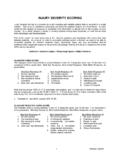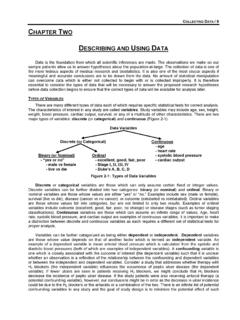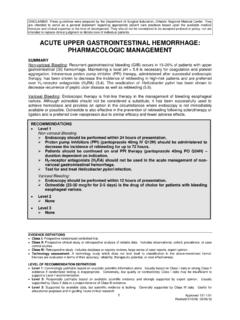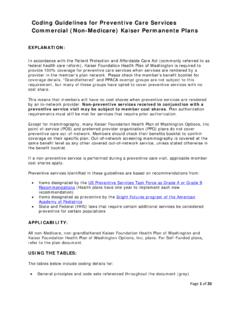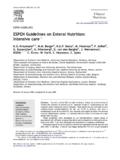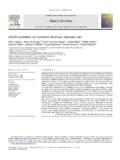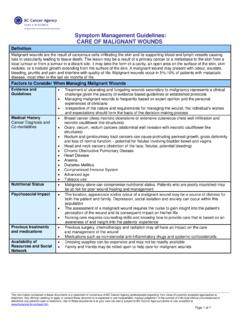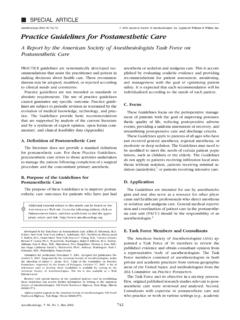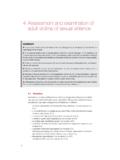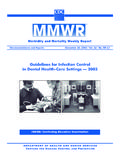Transcription of ICU SEDATION GUIDELINES - SurgicalCriticalCare.net
1 DISCLAIMER: These GUIDELINES were prepared by the Department of Surgical Education, Orlando Regional Medical Center. They are intended to serve as a general statement regarding appropriate patient care practices based upon the available medical literature and clinical expertise at the time of development. They should not be considered to be accepted protocol or policy, nor are intended to replace clinical judgment or dictate care of individual patients . ALCOHOL WITHDRAWAL. SUMMARY. Alcohol withdrawal syndrome (AWS) is common in surgical and traumatically injured patients . patients at risk must be identified and watched carefully for the development of symptoms. The mainstay of treatment is benzodiazepines. Controversy exists as to who should receive treatment, how to administer benzodiazepines, and which benzodiazepine to use. Adjunctive forms of treatment include beta-blockers, clonidine, and others. Other frequently practiced, yet less investigated treatments, include intravenous and oral ethanol.
2 RECOMMENDATIONS. Level 1. None Level 2. Benzodiazepines are the agents of choice in preventing alcohol withdrawal seizure activity Routine alcohol withdrawal prophylaxis is not necessary Ethanol use demonstrates no better outcomes when compared with benzodiazepines Alpha-2 agonists are effective adjuncts to benzodiazepine use for AWS. Short acting agents such as oxazepam may have an increased incidence of seizure activity Level 3. patients with a prior history of alcohol withdrawal seizures should receive prophylaxis INTRODUCTION. Alcohol abuse and dependency remain enormous burdens to the individual and society. It is estimated that eight million American individuals are dependent upon alcohol (1). Death from alcohol abuse claims roughly 85,000 lives annually. Morbidity-related consequences of alcohol abuse are vast, and the estimated annual cost of alcohol abuse exceeds $200 billion dollars. Nearly 40% of individuals in emergency departments have alcohol in their bloodstream, and an estimated 8% of individuals admitted to the hospital will exhibit the constellation of the signs and symptoms known as alcohol withdrawal syndrome (AWS).
3 This brief review will provide a focused description of the recognition, prevention, and treatment of AWS. AWS is encountered frequently in the surgical patient population and clinicians can expect that the manifestations may complicate surgical therapy. Thus, it is imperative that control of derangements be swift and effective as the consequences AWS can be deadly. EVIDENCE DEFINITIONS. Class I: Prospective randomized controlled trial. Class II: Prospective clinical study or retrospective analysis of reliable data. Includes observational, cohort, prevalence, or case control studies. Class III: Retrospective study. Includes database or registry reviews, large series of case reports, expert opinion. Technology assessment: A technology study which does not lend itself to classification in the above-mentioned format. Devices are evaluated in terms of their accuracy, reliability, therapeutic potential, or cost effectiveness. LEVEL OF RECOMMENDATION DEFINITIONS.
4 Level 1: Convincingly justifiable based on available scientific information alone. Usually based on Class I data or strong Class II. evidence if randomized testing is inappropriate. Conversely, low quality or contradictory Class I data may be insufficient to support a Level I recommendation. Level 2: Reasonably justifiable based on available scientific evidence and strongly supported by expert opinion. Usually supported by Class II data or a preponderance of Class III evidence. Level 3: Supported by available data, but scientific evidence is lacking. Generally supported by Class III data. Useful for educational purposes and in guiding future clinical research. 1 Approved 06/20/2005. Revised 10/29/2009, 07/29/2015. HISTORY. Recognition begins with a thorough patient history. Prevention before symptoms arise is paramount (1). At-risk patients should be closely evaluated for signs and symptoms of AWS with the intent to prevent development of the more serious stages of the disease process.
5 Various scales and questionnaires exist to evaluate patients for possible alcohol misuse (CAGE, SMAST) (2). It is vital to identify patients with a history of alcohol-related seizure activity or delirium. Consideration for prophylactic treatment is warranted. Other risk factors include duration of the abuse process (> 6 years), markedly elevated blood alcohol levels, and associated medical illnesses such as alcoholic gastrointestinal disease and elevated liver enzymes which are markers of underlying alcohol abuse. Mechanical ventilation and SEDATION can mask AWS, making assessment using alcohol abuse prediction scales difficult and delaying care . Friends and family may be reluctant to fully disclose the patient's true daily alcohol intake. Close monitoring and a high index of suspicion are essential. PATHOPHYSIOLOGY. It is important for the clinician to understand the manner in which alcohol affects normal homeostasis and how abrupt alcohol cessation can precipitate AWS.
6 The pathophysiology of alcohol dependence and AWS is a broad area of research. The purpose of this review is not to describe the complicated molecular mechanisms involved, but a basic knowledge is important. The excitatory and sympathetic systems are up-regulated in a state of dependence to compensate for the hyperactive GABA ergic system stimulated by chronic alcohol use. Abrupt removal of alcohol allows unregulated sympathetic and glutaminergic stimulation. Ethanol suppresses ion flow through NMDA receptors, which manifests as clinical intoxication (3). If that suppression is abruptly removed, the glutaminergic system, previously up- regulated to a new homeostasis, will produce transmission normally dampened by alcohol. Clinically, tachycardia, hypertension, agitation, anxiety, seizures, and excitotoxic neuronal death may ensue. Sellers and Kalant state that AWS results from acquired tolerance and physical dependence on ethanol with neurophysiologic alteration that offset the depressant effects of alcohol on neuronal excitability, impulse conduction, and transmitter release (4).
7 This statement encapsulates well the biochemical alterations that occur in the dependent individual and has targeted implications for the prevention and treatment of AWS. PREVENTION. Seizure activity and delirium tremens (DT) are two feared morbidities of AWS. Between 5-15% of individuals exhibiting signs of withdrawal will progress to have seizures or DT (1). Quick action on the part of the clinician is imperative. The literature is abundant with strategies aimed at the prevention of AWS, and thus controversy surrounds the best manner of action. The CIWA-Ar (The Clinical Institute Withdrawal Assessment for Alcohol- revised) assessment is a tool to aid the clinician in determining the best course of intervention (5). It has become widely used, and is an example of an instrument to guide treatment once the diagnosis of AWS has been established. The tool consists of ten domains with each domain assigning a score to a particular sign or symptom according to the severity perceived by the patient or observed by the clinician.
8 Each score is added and treatment is tailored to the score. Assessments are repeated on a regular basis during treatment with goal-directed therapy designed to reduce the score. The mainstay of AWS treatment has been the liberal use of benzodiazepines. Many trials have noted the efficacy of this class of drugs in reducing withdrawal symptoms compared to placebo and other possible agents (6). Controversy exists as to whether these medications should be administered on a routine or as-needed (PRN) basis. The use of one benzodiazepine over another is also a subject of debate. Clonidine, various beta-blockers, and haloperidol have also been advocated. Although these agents may provide symptomatic relief, they can mask the more serious stages of AWS and should be used with caution and in conjunction with a benzodiazepine. Haloperidol may also lower the seizure threshold. The use of ethanol has also been investigated for AWS, but a randomized trial in 2008 failed to show 2 Approved 06/20/2005.
9 Revised 10/29/2009, 07/29/2015. significant benefit over the use benzodiazepines (7). There are rare case reports regarding the use of propofol in refractory delirium tremens (8). TREATMENT. Benzodiazepines Benzodiazepines are widely used to treat patients with AWS and are considered to be the drug class of choice. Their use resides in their ability to promote the binding of the major inhibitory neurotransmitter GABA to the GABA receptor, a ligand-gated chloride channel (9). In cases of overdose, flumazenil is an effective GABA receptor antagonist that competes with benzodiazepines for binding. Respiratory depression and hypoxia is minimal in normal patients , but can be marked in patients with hepatic dysfunction and COPD. Caution should be exercised in patients who snore or those with obstructive sleep apnea as benzodiazepines can relax the upper airway musculature. Cardiovascular effects are of minor consequence in normal patients , but may produce decreased blood pressure and increased heart rate in the critically ill.
10 Volume of distribution is large and increased in elderly patients . Benzodiazepines cross the placenta and are secreted in breast milk. Anterograde amnesia is common and beneficial. When used for the short-term treatment of delirium, physical dependence is rare. All of the agents listed below have been used to treat and ameliorate the symptoms of AWS. Optimal treatment with benzodiazepines is controversial, but there is some evidence that longer-acting benzodiazepines may prevent seizures more effectively than the shorter-acting formulations (10). Lipophilic agents enter the central nervous system more quickly and seem more effective in controlling acute seizure activity. Prolonged SEDATION may be cumbersome or unwanted in some patients . The method of metabolism is also important in choosing the optimal agent. An agent with a simpler hepatic degradation process (glucuronide conjugation) may be beneficial in certain patient populations.
